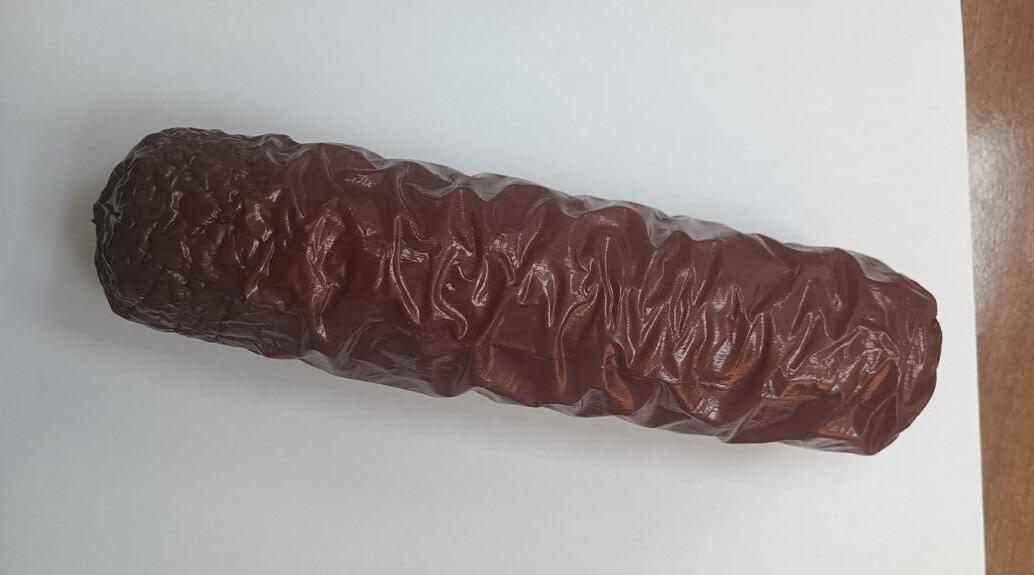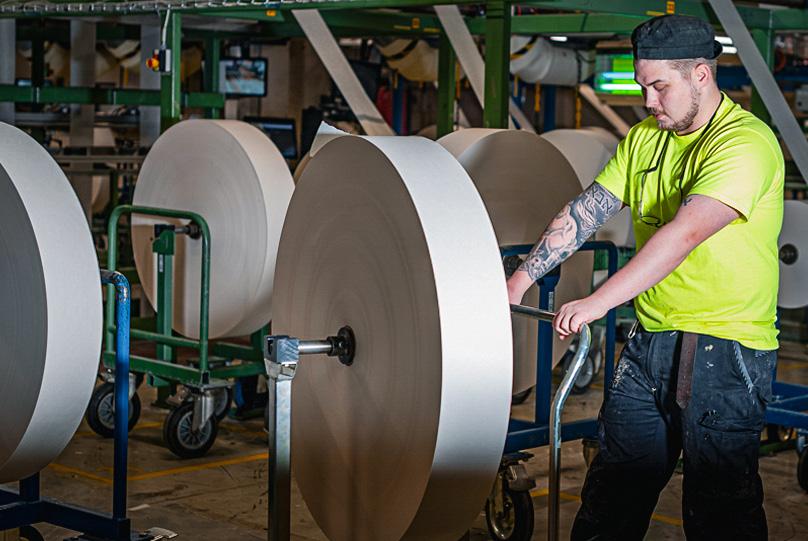4 minute read
Beyond compliance .
The control of emissions is occasionally seen as a process that is separate from the core manufacturing process. We prefer to view the handling of our emissions as a part of the supply chain, not something treated on the sidelines. Continuously trying to minimize our raw material usage, increasing the recycling degree, and minimizing the effluents isn't just environmentally correct, but is also sound from an economical point of view. The effort to find value-added solutions in the material flow helps keep us in business.
Freshwater
The Hanko and Lommel plants don't have surface water available in proximity for use as freshwater in the production process. However, we do have good-quality groundwater that is suitable for usage in the manufacture of food contact material. We monitor the usage of the water and report the usage and related KPIs to the authorities to make sure it's on a sustainable level. The Hanko plant has increased the freshwater-related cooperation with the local community and industry, mainly through the monitoring and sharing of results. Occasionally we have experienced dryer periods that put a strain on our freshwater wells. Because of this, we started some years ago a project to optimize the rinsing water usage in the casing machines. The project was finished in 2017 and resulted in a total water usage reduction of 15%. Then came a period of some years during which we did not manage to hold our previously made gains. Consequently the water usage increased somewhat. In order to get us back on track the topic was taken up for a review, starting 2022 and continuing at least for 2023. This time around there was more focus on good machine runability and energy saving angles. This will require investments that enable better control of temperature and freshwater flows in the casing machines.
The Lommel plant uses water from three different wells. The quality and the quantity are measured permanently and reported to the government yearly. All levels are in line with the permits and there were no penalties over the last 20 years. The strategic plan was to reduce the water usage by 5% each year, related to production volumes. This plan will be continued in the future We defined a multi-year water reduction plan and we have a proactive water- reduction team working on continuously reducing our water consumption. Each year we want to reduce our water consumption by 5% compared to the previous year. All projects are implemented The Lommel plant has reached the promised 25% reduction in five years as of 2016. A new reduction plan for the next years was already made up. Over the last 20 years the water reduction was up to 50%.
Wastewater
The Hanko plant is part of the Hanko Peninsula seawater monitoring zone. There is a yearly survey that is prepared by Länsi-Uudenmaan vesi ja ympäristö ry for the authorities. According to this report, the Hanko plant's nitrogen load is in the range of 2-3% of the total load in the monitored area. In 2014, Oy ViskoTeepak Ab signed an agreement with Hanko City on joint handling of the wastewater. The main benefit point is that there are synergies between the various effluent streams that make it more efficient to treat them together rather than having every individual actor cleaning their wastewater on their own. In 2017, the city of Hanko made maintenance works to the transfer pipeline. Planned and unplanned interruptions in the transfer line from the plant to the waste treatment facility are handled by using inter- mediate storage tanks. Thunderstorms can cause electrical failures in the pumping stations in the transfer line. In these situations, the wastewater is stored in intermediate tanks, no effluent water is led to the surroundings.
The ViskoTeepak Lommel wastewater is treated by Aquafin after the water is collected with the city of Lommel and other companies. In the semiannual compliance audit, all measurements are reviewed by the external auditor. All overruns must be reported to the government. An action plan to avoid these overrun emissions was made up. During 2022 we improved several continuous measurements and a stop of discharging in case of one of the measurements are not compliant.
Energy
Energy and water company Adven has been a long-term partner of ViskoTeepak in the Hanko plant. A heating plant that uses bio fuels was built in the factory area in 2012-2013, and since then Adven has taken the responsibility for operation and maintenance of the heating plant as well as its 24/7 surveillance according to a partnership model. Adven provides ViskoTeepak with trouble-free round-the-clock thermal production. Earlier the thermal energy required by the Hanko plant was produced using heavy fuel oil. Taking the heating plant into operation replaced it almost completely with bio fuels. Around 95% of the thermal energy required by the ViskoTeepak Hanko factory is produced with domestic bio fuels. The remaining part is produced with liquid petroleum gas, and its use is primarily limited to the yearly maintenance break of the heating plant. We realize there are many aspects to consider when calculating the CO2 net emissions. A general and simplified view says that the CO2 released when the wood is burned is consumed by the biomass when it is growing, hence CO2 neutrality. More detailed studies go into indirect CO2 emissions related to burning wood. We estimate that the CO2 emissions of the thermal plant in Hanko were down 90% compared to 2012 when it became operational (moving away from heavy fuel oil to forest residues, wood). The total output of the heating plant serving the ViskoTeepak Hanko factory is 12 MW, consisting of a 6 MW boiler for solid fuels and a 6 MW peak power boiler. The operation of the heating plant is allocated to a named plant operator, who takes care of fuel availability and continuous energy production. Additionally, the Hanko heating plant is under continuous remote surveillance from the Adven central control room in Vantaa. The Hanko plant joined the Finnish energy-saving initiate Motiva in 2017 and is on a good path to reduced energy consumption according to the initial targets set up to be fulfilled by the year 2025.
In our ViskoTeepak Lommel plant the energy consumption was reduced according to the plans we made up. In 2018 we did a major upgrade of the cogeneration plant. Increased efficiency in the cogen plant gives us more heat and electricity when we convert natural gas. Together with the improved efficiency, the plant reduces NOx emissions by more than 50%. The new installation is therefore fully compliant with the strictest European standards. The installation of new, Low NOx burners took place in 2020 in our steam boilers. The benefit in lower NOx is much better than the legal compliance.







